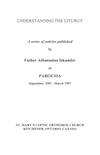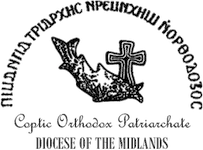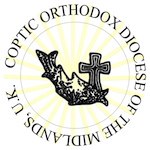
Understanding the Liturgy: The Intercessions
Intercessions are prayers on behalf of others. St. Paul tells his disciple Timothy, “I exhort therefore, that first of all, supplications, prayers, intercessions and giving of thanks be made for all men” (1Tim 2:1).
Intercessions have always been a part of the Liturgy as attested by St. Cyril of Jerusalem.
When the spiritual sacrifice, the bloodless worship has been completed, over this sacrifice of propitiation we beseech God for the common peace of the churches, for the good estate of the world … we all pray and offer this sacrifice. [92]
The intercession for peace:
“Pray for the peace of Jerusalem,” exhorts the Psalmist (Ps 122:6). To us, children of the new covenant, Jerusalem is the Church, “the mother of us all” (Gal 4:26).
She is One and Only, as the bride of Christ. “My undefiled is but One, she is the Only one of her mother” (Song 6:9).
She is holy (Eph 5:27), catholic (universal) (Rom 1:8), and apostolic (Eph 2:20).
The intercession for the Fathers:
We next pray for the pope, the bishops, the hegoumens, the priests and the deacons, the subdeacons and the seven orders of the Church of God.
The word hegoumen originally meant the head of a monastic community (an abbot). It is used in the Liturgy to describe Abba John the hegoumen and Abba Daniel the hegoumen, both of which were heads of monastic communities. It is currently used to describe the senior priest in a church.
Deacons and subdeacons are among the higher orders of the Church. The seven minor orders of the Church include the readers (anagnosts), the singers (psalts), the exorcists, the monks, the virgins, the widows and the door keepers.
Exorcists were used in the early Church to prepare catechumens for Baptism. Since catechumens were idol worshippers, the Church deemed them in need of a lengthy service of exorcism on the night preceding their Baptism.
Virgins and widows were two orders in the early Church with specific duties (1Tim 5:9, 1Cor 7:25).
Intercession for the place:
A prayer for the city or monastery in which the church is located, and all other cities, districts (provinces or states), islands and monasteries.
The seasonal intercessions:
Three intercessions follow, one for clement weather, one against drought, and one for the plants.
The intercession for the air of heaven and the fruits of the earth is a prayer for good weather. The ancients believed that the atmospheric changes that produce the four seasons are controlled by the “four winds of heaven” (Dan 8:8). It is the orderly succession of the seasons that brings about the fruitfulness of the earth (Gen 8:22).
The intercession for the rising of the river waters is a prayer against drought. In recent years many areas of the world suffered drought including Canada and U.S.A.
The intercession for the corn, the herbs and the grass of the field, is a prayer for the plants in general.
Corn (wheat) is the mainstay of human diet (bread). By herbs is meant vegetables which are necessary for the human diet also. Grass of the fields (or plants of the field) are food for domestic animals (Isa 37:27, Dan 4:23).
Commemoration of the saints:
Our Lord Jesus Christ commanded the commemoration of the saints when he told His disciples, “Verily I say unto you, wheresoever this gospel shall be preached in the whole world, there shall also this, that this woman hath done, be told for a memorial of her” (Mat 26:13). That is why all the ancient liturgies mention the departed saints,
Next, we call to mind also those who have fallen asleep, first of all, patriarchs, prophets, Apostles, and martyrs, that God, through their intercessory prayers, may accept our supplication. [93]
By patriarchs we mean the fathers of fathers, like Adam, Enoch, Noah, Abraham, Isaac and Jacob. The prophets are the likes of Moses, Samuel, Isaiah, Daniel, and so on. The Apostles include the 12 disciples and the other seventy Apostles. Preachers and evangelists are those who spread the gospel (Act 21:8, 2Tim 1:11, 4:5).
Martyrs are those who died for the sake of God. Confessors are those who suffered bodily harm for the sake of God but were not killed, like St. Samuel the Confessor, who lost an eye and a leg for the sake of the orthodox faith.
Let those who read . . . :
The Deacon exhorts, “Let those who read recite the names of our holy fathers the patriarchs who have fallen asleep …” Here, one of the deacons usually held a wooden board on which is inscribed the names of all the patriarchs of Alexandria, starting with St. Mark. The names were actually read as a memorial of those great fathers! This is rarely done today for sake of saving time! In the same time, the priest mentions the names of those who have fallen asleep, asking God to repose their souls in Paradise. This is also an ancient custom of the Church.
Next, we pray also for the holy fathers and bishops who have fallen asleep, and generally for all who have fallen asleep before us, believing that this will be of the greatest benefit to the souls of those on whose behalf our supplication is offered in the presence of the holy, most dreaded sacrifice. [94]
Someone may object that prayer for the departed will not benefit them, but we have a biblical precedent for this in the second letter to Timothy, where St. Paul prays for his departed friend Onesiphorus that, “The Lord grant unto him that he may find mercy of the Lord in that day” (2Tim 1:16_18). The Church believes that as long as that day(judgment day) has not come yet, there is always hope that our supplication may benefit the departed.
And I want to convince you by an illustration, for I know that many say, “what does it avail a soul departed this world, whether with or without sin, to be remembered at the oblation?” Well, suppose a king banished persons who had offended him, and then their relatives wove a garland and presented it to him on behalf of those undergoing punishment, would he not mitigate their punishment? In the same way, when we offer our supplications to Him for those who have fallen asleep, even though they are sinners, we do not weave a garland, but offer Christ slain for our sins, propitiating the merciful God both on their and our own behalf. [95]
The whole idea of praying on behalf of the departed, and asking them to pray on our behalf is underscoring the fact that the Church militant on earth and the Church victorious in heaven are one.
The final doxology:
“That in this and also in all things, Thy great and holy name, be praised … etc.” The Liturgy of the Eucharist starts with a doxology, “Glory and honour … unto the all_holy Trinity … etc.,” and it is most fitting that it ends with another doxology glorifying the Holy Trinity.
Introduction to the fraction:
A prayer of thanksgiving to God, Who made us worthy to complete the Liturgy, and a plea that he may make us worthy to partake of the holy body and the precious blood of Christ. Older copies of the Liturgy (up to the 14th century) do not have the people’s response “We worship Thine holy body, .. and Thy precious blood” Which means that they were introduced in the middle ages. This is most probably taken from the Catholic medieval practice of “Adoration of the Host.” [96] This in turn is based on the writings of Saint Augustin, “No one eats that flesh, unless he has first adored it.” [97]
The fraction:
We mentioned earlier, that the Liturgy of the Faithful follows a plan based on the actions of our Lord at the Lord’s Supper. The Lord gave thanks, blessed and broke. In the same manner, the Liturgy of the Faithful contains prayers of Thanksgiving (The Eucharistic prayers), prayers of blessing (the Institution Narrative, the Epiclesis, the Anamnesis and the Oblation), and finally, the prayers said over the breaking of the bread, or the Fraction.
The Fraction is the most versatile part of the Liturgy, since we have various prayers for the various seasons and occasions. Although the rubric (liturgical instructions) do not specifically mention a people’s response, it is customary for the people to interject by saying, “Kyrie eleison.” This response is mentioned by Pseudo_Germanus, who says that, “As the priest makes the fraction, the supplicant clergy sing an antiphon.” [98]
The way in which the priest divides the Body is very peculiar. There is very sparse commentary on this by the Fathers. The only explanation I came across is that it represents the appearances [99] of the Lord after His resurrection, to His disciples. [100]
Older versions of the Liturgy contain a very short Fraction, which was used regularly, except if there is an occasion or a feast. We reproduce it here for the record.
O Master, Lord, God, Who giveth light unto the world. Who hath crowned us with His faith. Who giveth unto us before we ask. Grant Thou unto us to bring forth fruit acceptable unto Thee, and with confidence to entreat Thee, our holy Father, Who art in the heavens and say—. [101]
The Lord’s prayer:
The recital of the Abba (the Lord’s Prayer) at the conclusion of the Eucharist is a very old custom in the Church. [102] While the people recite the Lord’s Prayer, the priest recites three prayers, the last of which is called the Absolution of the Father.
The deacon responds by saying, “Saved Amen, and with your spirit, in the fear of God let us attend.” The words “saved Amen” are also said at the beginning of the Liturgy of the Catechumens, after the priest recites the Absolution, “May Thy servants …” It is a very difficult word to interpret, but being said after the recital of the Absolutions, one could say that because in both Absolutions the priest admits his own sins and unworthiness, the response is to mean, you have been saved indeed by admitting your weakness before the Lord. “And with your spirit” means may the Absolution you just gave us be with you also.
Because the Absolution at the beginning of the Liturgy of the Catechumens is said aloud, the people respond, “Saved, Amen …” The Absolution of the Father is however said in a low voice, only the deacon hears it and so he exclaims, “Saved, Amen, and with your spirit.” The people respond, “Lord have mercy”.
The holies for the holy:
Next the priest says, “Holy things for the Holy.” Holy are the offerings after they have received the visitation of the Holy Spirit, and you are holy after you have been privileged to receive the Holy Spirit. So holy things and holy persons correspond. [103]
The exclamation is said in Greek, and the continuation of it is a little controversial. Current liturgy books cite,
EgloGHTo C Kgrio C IH C o C Xri C to C gio C ueo C aGia C mo C Phegma aGioh amHh
Translated into English, this means, “Blessed be the Lord Jesus Christ, the Son of God, the sanctification of the Holy Spirit. Amen.” This is, at best, meaningless.
Older liturgy books contain the following text instead,
EgloGHTo C Kgrio C IH C o C Xri C to C gio C ueo C aGia C a C eh Phegmati aGiv agtog amHh
Translated into English, this means, “Blessed be the Lord Jesus Christ, the Son of God, He hath sanctified Them by His Holy Spirit. Amen.” [104]
The people respond, “One is the all_holy Father …” This means that only One is holy: God Who is in truth holy. We are made holy by Him. “For truly One is Holy, holy by nature, we also are holy, not, indeed, by nature, but by participation, ascesis and prayer.” [105]
The confession:
The three proclamations of the priest to which the people respond, “Amen”, as well as the final confession, echo the Orthodox teachings of St. Cyril of Alexandria, during his fight against Nestorianism.
Proclaiming the death according to the flesh of the Only_begotten Son of God, that is Jesus Christ, confessing His Resurrection from the dead, and His Ascension into heaven, we celebrate the un-bloody sacrifice in the churches, and so proceed to the mystical consecrated gifts, and are sanctified, having become partakers of the holy flesh and precious blood of Christ, the Saviour of us all. And not as common flesh do we receive it, not at all, nor as a man sanctified and associated with the Word according to the unity of dignity, or as having had a divine indwelling, but as truly the life_giving and very flesh of the Word Himself. For He is Life according to His nature as God, and when He became united to His flesh, he made It life-giving [boldface mine].









